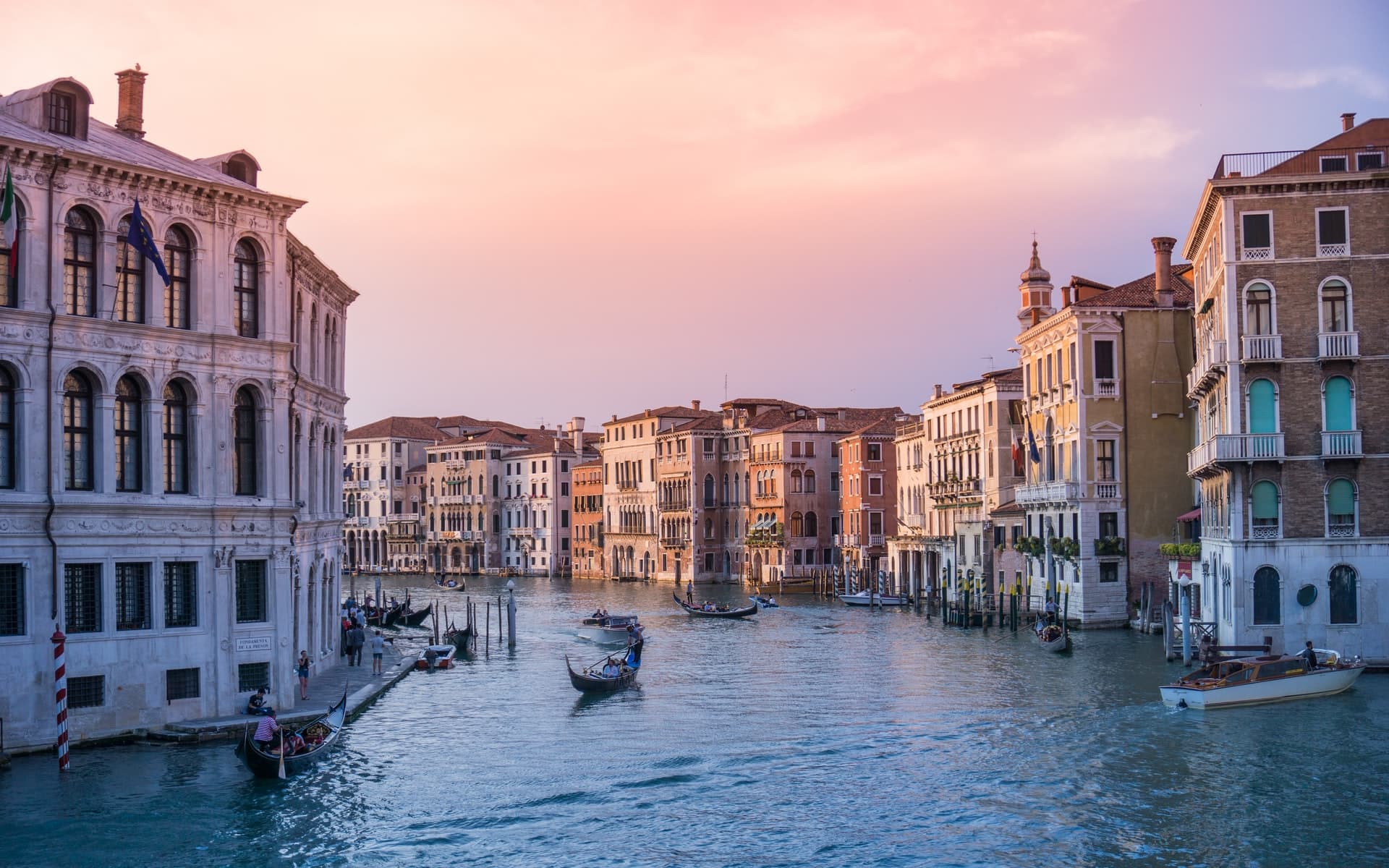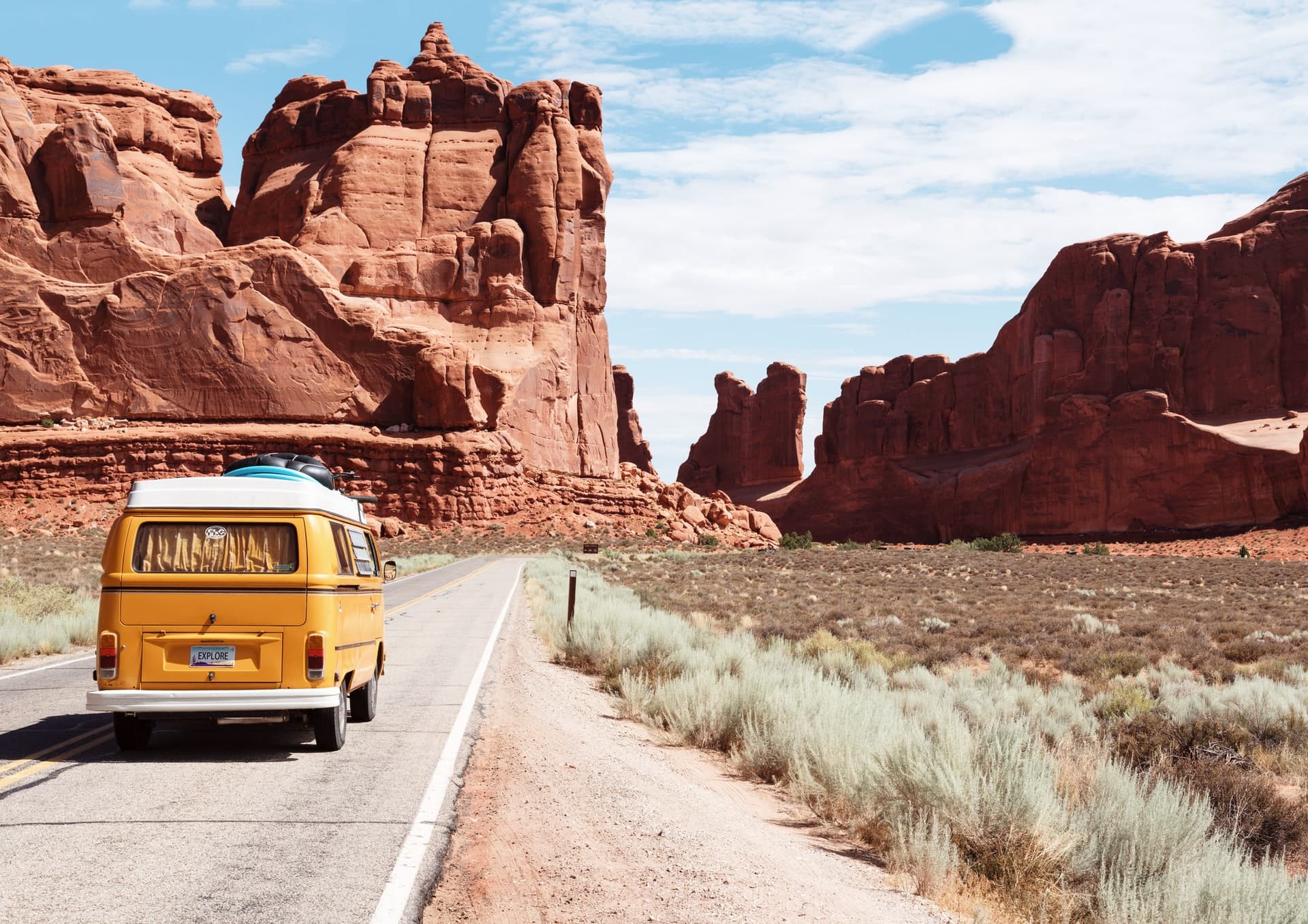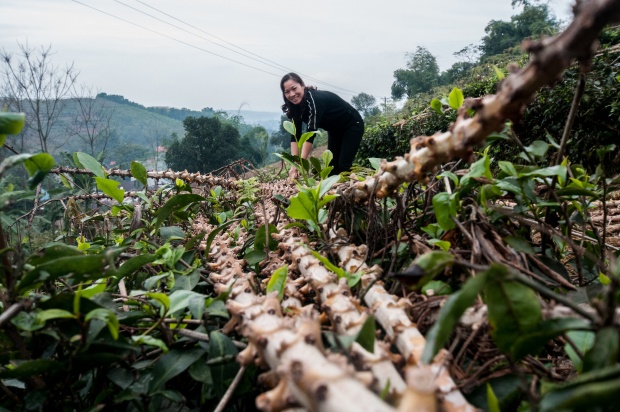Editor’s Note: This article about the social & environmental impact of travel was shared with us by Johny Mair, Cofounder of Ethic, a tech-driven asset manager that powers the creation of sustainable investment portfolios.
It’s that time of year when long hours at the office give way to relaxed Friday afternoons, family barbecues, and that eagerly anticipated experience: summer travel. Whether it’s a visit to your local state park or a round-the-world odyssey, it’s clear that Americans like to explore: U.S. residents logged 1.9 billion overnight trips for leisure purposes in 2019.
This summer, of course, is a little different. The COVID-19 pandemic has yielded border closures, travel restrictions, and, in some regions, the second wave of shutdowns. With travel plans for many scuppered this year, it felt like an opportune moment to reflect on our predilection for travel, and some of its environmental and social impacts. Here’s a look at some of the ways in which tourism affects communities worldwide.
Carbon emissions
It’s no secret that the very act of traveling—whether by train, plane, or automobile — has a negative impact on the environment, generating carbon emissions that accelerate climate change. In fact, global tourism accounts for approximately 8 percent of all global greenhouse gas emissions. This figure reflects the emissions that come from the act of travel itself (e.g., burning fuel) as well as the emissions associated with producing and transporting the commodities upon which tourists spend their money (e.g., food, accommodation, souvenirs).
Air travel is a noteworthy offender: despite recent investments in more fuel-efficient aircraft, passenger and freight aviation generated some 918 million metric tons of carbon dioxide in 2018—a 32 percent increase since 2013. It’s unclear as yet how the COVID-19 pandemic will affect appetite for air travel in the longer term, but the temporary grounding of planes these past few months has had an undeniably positive effect on air pollution levels worldwide.
Meanwhile, major cruise lines are planning a staggered approach to resume sailing following a well-documented series of COVID-19 outbreaks at sea earlier this year. However, it’s not just onboard health and safety standards that warrant scrutiny: a coalition of activists in global port communities is urging the cruise industry to use this unprecedented pause as a time to reevaluate environmentally harmful practices that “put the health of passengers, crew, port communities and the planet at risk.”
Cruise ships certainly spew out sulfur oxides, nitrogen oxides and particulate matter—tiny, inhalable particles and liquid droplets—that have been linked to cancer, asthma, heart disease, and a host of other serious health issues. One undercover study indicated that, in certain areas of cruise ship decks, staff and guests alike were exposed to levels of particulate matter similar to that in highly polluted cities such as Beijing. Germany’s largest environmental association, the Nature and Biodiversity Conservation Union (NABU), estimated in 2017 that “even a mid-size cruise ship burns through as much as 150 tonnes of fuel a day, emitting as much particulate matter as one million cars.”

Water intensity
Many of us in the United States are used to turning on a faucet and receiving access to clean, potable water; it can, therefore, be easy to forget that this vital natural resource is a finite one. Moreover, its distribution is highly unequal—more than a billion people worldwide currently live in water-scarce regions, and as many as 3.5 billion could experience water scarcity by 2025. The tourism industry, despite its economic benefits for local populations in low- and middle-income countries, might well be compounding the issue.
Tourism is, of course, heavily dependent on access to clean water. And while large hotels and resorts might have the capital and resources to ensure their guests enjoy high-pressure showers, swimming pools, spas, water features, and well-irrigated golf courses, it is often local residents and small businesses that suffer the negative impacts of excessive water usage. This is a reality that plays out all too frequently in some of the world’s poorest countries, where water disparity—the disproportionate use of water by tourists as compared to the local population—is particularly pronounced, leading to shortages and degradation of water supplies for locals. For example, in Zanzibar, where each hotel room’s daily water usage was found to be approximately 16 times higher than that of the average local household, over-extraction of groundwater by the tourism industry has led to salination of wells and subsequent conflict with surrounding communities.
Small island nations also face unique challenges, largely due to their geographical isolation and their limited resources for enhancing freshwater supply. According to the United Nations, water demand in these areas—driven by population growth and tourism—is increasing, while water supply is waning as a result of pollution and changes in rainfall patterns. Climate change is only projected to exacerbate water stress issues yet further, underscoring the need for sustainable approaches to travel, as well as sound water resource management.
RELATED ARTICLES: Sustainable Travel Solutions: An Interview with Juraj Žlof, Founder of TransferHero |Walking beside the Traveling Petite Girl |Travel With Purpose: Why You Should Try Backpacktivism |Transforming the Freight Industry Through Shared Truckload |The Coming Electric Aviation Revolution |Post-Pandemic Recovery Planning and The ‘Efficiency’ Trap |Equality in a post-pandemic era: gender, COVID-19, agriculture and climate change |Sustainability and Local Governments in the Context of the COVID-19 Pandemic
Deforestation and land degradation
Tourism is not as culpable as sectors such as agriculture, but still cannot be overlooked when it comes to its role in the razing and conversion of ecologically important natural landscapes.
When the 2018 Winter Olympics came to South Korea, government officials leveled an entire village and felled 58,000 trees to accommodate a luxury resort. More recently, on the Caribbean island of Grenada, locals have expressed concerns about the destruction of biodiverse mangroves to make way for a high-end hotel. In Bali, demand for luxury resorts is spurring developers to cut costs by sourcing timber from nearby forests—leading to increased incidence of flash floods, jeopardizing local farmers’ crops and livelihoods.
The decimation of natural habitats can indeed cause long-term disturbance to, and erosion of, the local ecosystem. In the Mediterranean region, which attracts some 300 million tourists each year, wetlands offer vital ecosystem services by naturally purifying water and capturing carbon from the atmosphere. However, rapid urbanization of these coastal areas—driven in large part by tourism—is reducing the amount of land available for agriculture, potentially threatening food security and increasing flood risk.

Human rights
Pre-COVID-19, the global tourism industry had just experienced its tenth consecutive year of growth, with all world regions experiencing an uptick in tourist arrivals. The sector certainly has tremendous potential to create jobs and alleviate poverty in developing countries, even promoting gender equity and increased opportunities for women. However, there are a number of human rights concerns associated with tourism expansion, particularly in developing countries.
Indigenous communities have often found themselves displaced to make way for tourist accommodations and attractions—either through forced evictions, high taxes on landowners or through government-imposed no-building zones for citizens in the wake of natural disasters. Even if members of local communities do secure employment in the tourism industry, they aren’t guaranteed a living wage: accounts of exploitative working conditions abound in popular tourist destinations here in the U.S. and abroad. Worse still, nearly 25 million people worldwide are victims of human trafficking and forced labor—with many ending up in the hospitality industry.
Another ethical dilemma that some travelers wrestle with is whether they wish to implicitly support a brutal or authoritarian regime by visiting a country or region. For example, the previously militarized southeast Asian country of Myanmar (Burma) opened up to tourists in 2011, sparking an influx of new visitors. However, the country’s ongoing persecution of minority Rohingya Muslim populations has since made headlines in Western media outlets, even leading to the imprisonment of two journalists investigating associated killings and human rights abuses. As such, some groups have advocated for boycotts of all travel to the country.
As with most sustainability issues, though, there are trade-offs to consider: some would contend that travel boycotts only perpetuate economic challenges that increase the likelihood of conflict in impoverished countries. One study found that the majority of visitors to Myanmar during its military rule leaned into a ‘citizen diplomacy’ approach, which acknowledges the positive role of tourism in promoting a cross-cultural exchange of ideas, increasing awareness of conditions on the ground, and improving employment opportunities and living conditions for the destination country’s residents. There is, perhaps unsurprisingly, no one-size-fits-all answer as to whether one should visit countries or regions ruled by oppressive regimes, but it’s worth noting that there’s usually a distinct separation between the people that inhabit a place and those that operate at the upper echelons of its government and are empowered to shape its future.

Waste
At some destinations, tourists produce up to twice as much solid waste per capita as local residents. In those areas with less developed infrastructure, waste management—for both solid waste and sewage— has emerged as a serious challenge. In Nepal, Everest climbers leave behind trash such as food containers, gas canisters, and discarded supplies, earning the famous peak the dubious distinction of “highest dumpster in the world.” In the Mediterranean region, marine litter increases by up to 40 percent during peak tourist season. And last year, the largest cruise operator in the world was fined $20 million after admitting to dumping plastic waste off the coast of the Bahamas.
Improper waste disposal can have a range of environmental and social impacts: not only does it spoil the alluring aesthetic of destinations, compromising the very industry on which locals have become highly dependent, but it may prove detrimental to marine and human life alike. Discarded litter can block drains and form reservoirs of stagnant water, attracting mosquitoes and flies that spread zoonotic diseases such as malaria, dengue fever, and chikungunya virus. Ocean debris and untreated sewage pose a grave threat to marine ecosystems, damaging important habitats such as coral reefs and harming ocean-dwelling wildlife that can become entangled in discarded items or ingest harmful plastics. Microplastics—tiny pieces of plastic up to five millimeters in diameter—are subsequently entering the human food chain, with as-yet-undetermined effects on our health.

Conclusion:
At Ethic, we remain squarely focused on leveraging the power of the capital markets to effect meaningful change and influence corporate behaviors. We are heartened to see an uptick in the number of travel and tourism companies reporting sustainability metrics, enabling investors to make more informed decisions regarding the allocation of capital.
However, there is an entire travel and tourism industry out there that is still largely held unaccountable as far as sustainability practices go. This places the onus largely on the individual to conduct adequate research and ascertain whether travel operators’ practices align with their values—a tall ask, admittedly, but there are steps you can take to limit your impact when traveling.
Avoid flying when possible—or at least try to opt for destinations closer to home—and consider using public transportation upon arrival. If you’re traveling for business, ask yourself whether that business meeting could be conducted equally effectively via video conferencing technology (a practice that has, in this post-COVID world, become far more widely accepted). If you determine that you really must fly, check whether your preferred airline offers a carbon offset program that seeks to somewhat balance your pollution by investing in projects that reduce greenhouse gas emissions. Look for accommodations that use renewable energy sources, or that actively reduce their water use with installations such as low-flow showerheads, particularly in arid regions. Seek out operations that source regional produce and employ local workers, ensuring that the surrounding community benefits economically from your visit. Limit your use of single-use plastics, and take care to leave the natural environment as you found it.
Travel is undoubtedly a rewarding pastime that allows us to experience different cultures and expose ourselves to diverse perspectives. Its potential as an educational tool can’t be overlooked. However, if and when the threat of pandemic abates, it is our hope that corporate behavior won’t merely return to ‘business as usual’. The COVID-19 emergency has shone a light on just how interconnected we are as a global community—we hope this will encourage the travel industry and its many stakeholders to explore a new path forward, placing greater emphasis on empowering all involved and preserving the planet.
In the cover picture: Photo by Dino Reichmuth on Unsplash
Editor’s Note: The opinions expressed here by Impakter.com contributors are their own, not those of Impakter.com









